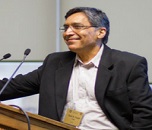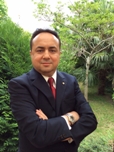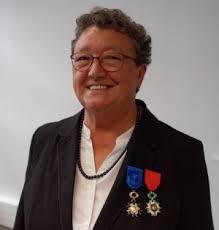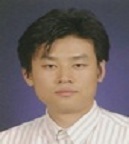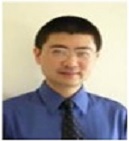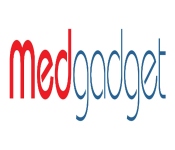Theme: Ground breaking ways to win the lives through biotechnology
EURO BIOSENSORS 2019
On behalf of the Scientific Committee, we are glad to invite all the participants across the globe to attend 11st Euro Biosensors & Bioelectronics Congress during October 23-24, 2019 at Rome, Italy which includes prompt keynote presentations, Oral talks, Poster presentations and Exhibitions. Euro Biosensors 2019 is a specially designed cluster Bio Electronics conference. The main theme of this conference is “Technical Advances in Biosensors and Bioelectronics” which covers a wide range of critically important sessions.
In the Era of quantitative biology, and abundant data, Biosensors & Bioelectronics seems to be the continuously emerging field with the cutting-edge research technologies. Biosensors Conferences will cover issues on Biochips, Biosensors and Bioelectronics and will provide a unique forum for the publication of innovative research on the development of alternative sustainable technologies. Biosensors Conferences which provide monitoring biological and synthetic processes are used besides medical measuring and analyzing, for environmental observations and controls, defence industry, agriculture and food.
ConferenceSeries llc Ltd Organizes 1000+ Global Events Every Year across USA, Europe & Asia with support from 1000 more scientific societies and Publishes 700+ Open access journals which contains over 100000 eminent personalities, reputed scientists as editorial board and organizing committee members. The conference series website will provide you list and details about the conference organize worldwide.
For More details about the Conference Kindly contact Program Manager
Biosensors Conferences 2019
Biosensors Conferences is the premier conference to gather scholars from all over the world to present advances in the relevant fields and to foster an environment conducive to exchanging ideas and information. This conference will also provide an ideal environment to develop new collaborations and meet experts on the fundamentals, applications, and products of the bio sensor technologies. Euro Biosensor 2019 warmly welcomes Professors, Industrialists, Research scholars, CEO’s, and other experts related to the field of Biosensing technologies.
Euro Biosensors 2019 is comprised of 15 Main Tracks and 43 sessions designed to offer comprehensive sessions that address current issues in Biosensors and Bioelectronics Conferences
Track 01-Biosensors
The term “biosensor” is short for “biological sensor.” A biosensor is an analytical device which converts a biological response into an electrical signal. The device is made up of a transducer and a biological element that may be an enzyme, an antibody or a nucleic acid. The bio element interacts with the analyte being tested and the biological response is converted into an electrical signal by the transducer. Electrochemical biosensors are normally based on enzymatic catalysis of a reaction that produces or consumes electrons (such enzymes are rightly called redox enzymes). Amperometric biosensors are self-contained integrated devices based on the measurement of the current resulting from the oxidation or reduction of an electro active biological element providing specific quantitative analytical information. They generally have response times, dynamic ranges and sensitivities similar to the potentiometric biosensors.
A potentiometric biosensor can be defined as a device incorporating a biological sensing element connected to an electrochemical potential transducer. Potentiometric biosensors usually rely on a biochemical reaction leading to simpler chemical specie and its subsequent electrochemical detection. The analytical signal generated by a potentiometric biosensor is an electrical potential. An electrochemical biosensor is a self-contained integrated device, which is capable of providing specific quantitative or semi-quantitative analytical information using a biological recognition element (biochemical receptor) which is retained in direct spatial contact with an electrochemical transduction element.
Recommended Biosensors Conferences | Biosensors Meetings
6th International Automobile and Mechanical Engineering Conference July 08-09, 2019 Zurich, Switzerland; 5th International Wireless Conference October 24-25, 2019 Rome, Italy; 3rd Wind and Renewable Energy Congress June 24-25, 2019 Barcelona, Spain; 6th International Big Data Analysis and Data Mining conference July 25-26, 2019 London, United Kingdom; International Conference on Biosensors June 6 - 7, 2019 San Francisco, USA; International Conference on Bioelectronics, Bioinstrumentation and Biosensors April 24 - 25, 2019 Boston, USA
Related societies:
IEEE Engineering in Medicine and Biology Society, Biomedical Engineering Society, American Institute for Medical and Biological Engineering, the Electrochemical Society, Society for Biological Engineering, The Optical Society, The Bioelectrochemical Society, The Electrochemical Society
Track 02- Biosensing Technologies
Bio-sensing technologies are of increasing importance in healthcare, agri-food, environmental and security sectors, and this is reflected in the continued growth of global markets for such technologies. Biomechanics is closely related to engineering, because it often uses traditional engineering sciences to analyze biological systems. Some simple applications of Newtonian mechanics and/or materials sciences can supply correct approximations to the mechanics of many biological systems. Reliable methodologies are needed for point and stand-off detection of chemical, biological, radiological, special nuclear and explosive (CBRNE) materials. These technological needs are not universally military in nature. For example, there is pervasive interest among diverse disciplines such as medicine, law enforcement, explosive ordinance disposal, Natural environmental protection, industrial manufacturing and food processing in being able to develop capabilities for the rapid detection and identification capabilities for various biochemical markers. The major features required to develop a commercially successful bio-sensing technology are represented as follows: 1. Novel biomarkers 2. Biosensor surfaces 3. Novel detection technologies 4. Instrumentation and Integration 5. Commercialization and impact
Recommended Biosensing Technology conferences
6th International Automobile and Mechanical Engineering Conference July 08-09, 2019 Zurich, Switzerland; 5th International Wireless Conference October 24-25, 2019 Rome, Italy; 3rd Wind and Renewable Energy Congress June 24-25, 2019 Barcelona, Spain; 6th International Big Data Analysis and Data Mining conference July 25-26, 2019 London, United Kingdom; International Conference on Biosensors June 6 - 7, 2019 San Francisco, USA; International Conference on Bioelectronics, Bioinstrumentation and Biosensors April 24 - 25, 2019 Boston, USA
Related Societies:
IEEE Engineering in Medicine and Biology Society, Biomedical Engineering Society, American Institute for Medical and Biological Engineering, the Electrochemical Society, Society for Biological Engineering, The Optical Society, The Bioelectrochemical Society, The Electrochemical Society
Track 03- Enzyme-based biosensors
Electrochemical biosensors are usually supported protein enzymatic catalysis of a reaction that produces or consumes electrons (such enzymes are justly known as oxidoreduction enzymes). An enzyme biosensor is an analytical device that combines an enzyme with a transducer to produce a signal proportional to target analyte concentration. This signal can result from a change in proton concentration, release or uptake of gases, such as ammonia or oxygen, light emission, absorption or reflectance, heat emission, and so forth, brought about by the reaction catalyzed by the enzyme. Enzyme - based sensors are more specific than cell based sensors. They have faster responds due to shorter diffusion paths. They are expensive to produce due to the problem of isolating the enzyme. Optimal enzyme activity is essential for maintenance of physiological homeostasis. Both non-genetic and genetic disruptions can excessively activate or silence intrinsic enzyme activities, with pathological outcomes. The pharmacological agents are activators and inhibitors of enzymes. It is essential in the development of drugs as enzyme activators and inhibitors that enzyme activities be accurately measured under physiological and pathological conditions. The coupling of enzymes with electrochemical sensors permits the simple determination of metabolites, therapeutic drugs, antigens, and antibodies.
Recommended Enzyme biosensors conferences
6th International Automobile and Mechanical Engineering Conference July 08-09, 2019 Zurich, Switzerland; 5th International Wireless Conference October 24-25, 2019 Rome, Italy; 3rd Wind and Renewable Energy Congress June 24-25, 2019 Barcelona, Spain; 6th International Big Data Analysis and Data Mining conference July 25-26, 2019 London, United Kingdom; International Conference on Biosensors June 6 - 7, 2019 San Francisco, USA; International Conference on Bioelectronics, Bioinstrumentation and Biosensors April 24 - 25, 2019 Boston, USA
Related Societies:
IEEE Engineering in Medicine and Biology Society, Biomedical Engineering Society, American Institute for Medical and Biological Engineering, the Electrochemical Society, Society for Biological Engineering, The Optical Society, The Bioelectrochemical Society, The Electrochemical Society
Track 04- Biosensor Applications
Biosensors are devices globalizing a biological element and a physiochemical detector that are used to detect analytes. The biosensor products have a wide range of their applications ranging from numerous industries including food and beverages, agricultural, environmental, medical diagnostics, pharmaceutical industries, clinical through to environmental and agriculture and many more. Even though numerous biosensors have been developed for detection of proteins, peptides, enzymes, and numerous other biomolecules for diverse applications, their applications in tissue engineering have remained limited. Graphene based enzymatic and non-enzymatic electrodes can efficiently detect glucose, cytochrome-c, NADH, hemoglobin, HRP, and cholesterol, hydrogen peroxide, AA, UA, DA, respectively. Nano capsules are Nano scale shells made out of a nontoxic polymer. They are vesicular systems that are made up of a polymeric membrane which encapsulates an inner liquid core at the Nano scale level. Nano capsules have a myriad of uses, which include promising medical applications for drug delivery, food enhancement, nutraceuticals, and for the self-healing of materials.
Recommended Biosensors Application Conferences | Biosensors workshops
6th International Automobile and Mechanical Engineering Conference July 08-09, 2019 Zurich, Switzerland; 5th International Wireless Conference October 24-25, 2019 Rome, Italy; 3rd Wind and Renewable Energy Congress June 24-25, 2019 Barcelona, Spain; 6th International Big Data Analysis and Data Mining conference July 25-26, 2019 London, United Kingdom; International Conference on Biosensors June 6 - 7, 2019 San Francisco, USA; International Conference on Bioelectronics, Bioinstrumentation and Biosensors April 24 - 25, 2019 Boston, USA
Related Societies:
IEEE Engineering in Medicine and Biology Society, Biomedical Engineering Society, American Institute for Medical and Biological Engineering, the Electrochemical Society, Society for Biological Engineering, The Optical Society, The Bioelectrochemical Society, The Electrochemical Society
Track 05- Biochips & Nucleic Acid Sensors
A hypothetical computer logic circuit or storage device in which the physical or chemical properties of large biological molecules (as proteins) are used to process information. A Biochip is a combination of minute DNA spots hooked up to a hard surface. Scientists use DNA Biochips to check the expression levels of huge number of genes at the same time. Each DNA spot contains Pico moles of a précised DNA sequence known as a probe. These can be tiny section of a gene or a DNA particle that are used to cross breed a DNA or RNA. Immunosensors are built by means of the appropriate combination of the biomolecules with the transducers used together; they can be applied in specific analytical situations. Immunosensors commonly rely on the reuse of the same receptor surface for many measurements. Aptamers are oligonucleotide or peptide molecules that bind to a specific target molecule. Aptamers are usually created by selecting them from a large random sequence pool, but natural aptamers also exist in riboswitches.
Recommended Biochips Conferences | Nucleic Acid Sensors Events
6th International Automobile and Mechanical Engineering Conference July 08-09, 2019 Zurich, Switzerland; 5th International Wireless Conference October 24-25, 2019 Rome, Italy; 3rd Wind and Renewable Energy Congress June 24-25, 2019 Barcelona, Spain; 6th International Big Data Analysis and Data Mining conference July 25-26, 2019 London, United Kingdom; International Conference on Biosensors June 6 - 7, 2019 San Francisco, USA; International Conference on Bioelectronics, Bioinstrumentation and Biosensors April 24 - 25, 2019 Boston, USA
Related Societies:
IEEE Engineering in Medicine and Biology Society, Biomedical Engineering Society, American Institute for Medical and Biological Engineering, the Electrochemical Society, Society for Biological Engineering, The Optical Society, The Bioelectrochemical Society, The Electrochemical Society
Track 06- Types of Biosensors
Optical biosensors are those based on the detection of changes on absorption of UV/visible/Infrared light when chemical reactions occur or on the quantity of light emitted by some luminescent process. A piezoelectric sensor works with the properties of piezoelectric effect, which can vary in changing pressure, acceleration, temperature, strain, or force by converting them to an electrical charge. It can be applicable with medical, aerospace and nuclear instrumentation. Piezoelectric sensor acts as a pressure sensor in the touch pads of mobile phones. Gravimetric biosensor varies under piezoelectric biosensor and it uses thin piezoelectric quartz crystals as resonating crystals or as surface acoustic wave devices.
Recommended Types of Biosensors Congress | Biosensors events
6th International Automobile and Mechanical Engineering Conference July 08-09, 2019 Zurich, Switzerland; 5th International Wireless Conference October 24-25, 2019 Rome, Italy; 3rd Wind and Renewable Energy Congress June 24-25, 2019 Barcelona, Spain; 6th International Big Data Analysis and Data Mining conference July 25-26, 2019 London, United Kingdom; International Conference on Biosensors June 6 - 7, 2019 San Francisco, USA; International Conference on Bioelectronics, Bioinstrumentation and Biosensors April 24 - 25, 2019 Boston, USA
Related Societies:
IEEE Engineering in Medicine and Biology Society, Biomedical Engineering Society, American Institute for Medical and Biological Engineering, the Electrochemical Society, Society for Biological Engineering, The Optical Society, The Bioelectrochemical Society, The Electrochemical Society
Track 07- Bioinstrumentation & Equipment’s
Biomedical engineering (BME) is the application of engineering principles and design concepts to medicine and biology for healthcare purposes (e.g. diagnostic or therapeutic). This field seeks to close the gap between engineering and medicine: It combines the design and problem solving skills of engineering with medical and biological sciences to advance health care treatment, including diagnosis, monitoring, and therapy. To ensure that good quality assurance practices are used for the design of medical devices and that they are consistent with quality system requirements worldwide, the Food and Drug Administration revised the Current Good Manufacturing Practice (CGMP) requirements by incorporating them into the Quality System Regulation, 21 CFR Part 820. An important component of the revision is the addition of design controls.
Recommended Bioinstrumentation conferences | Bioinstrumentation events
6th International Automobile and Mechanical Engineering Conference July 08-09, 2019 Zurich, Switzerland; 5th International Wireless Conference October 24-25, 2019 Rome, Italy; 3rd Wind and Renewable Energy Congress June 24-25, 2019 Barcelona, Spain; 6th International Big Data Analysis and Data Mining conference July 25-26, 2019 London, United Kingdom; International Conference on Biosensors June 6 - 7, 2019 San Francisco, USA; International Conference on Bioelectronics, Bioinstrumentation and Biosensors April 24 - 25, 2019 Boston, USA
Related Societies:
IEEE Engineering in Medicine and Biology Society, Biomedical Engineering Society, American Institute for Medical and Biological Engineering, the Electrochemical Society, Society for Biological Engineering, The Optical Society, The Bioelectrochemical Society, The Electrochemical Society
Track 08- Bioelectronics
Bioelectronics is a field of investigation in the conflux of biology and electronics. Biological properties can be measured and altered using electronics, magnetics, photonics, sensors, circuits, and algorithms. Bio molecular Electronics is a branch of Nano-science and technology dealing with the investigation and the technological exploitation of electron transport properties in special classes of biomolecules. Bioelectronics, specifically bio-molecular electronics, were described as 'the research and development of bio-inspired (i.e. self-assembly) inorganic and organic materials and of bio-inspired (i.e. massive parallelism) hardware architectures for the implementation of new information processing systems, sensors and actuators, and for molecular manufacturing down to the atomic scale. Biomedicine is a branch of medical sciences that deals with applying biological and natural science principles to clinical practices. It studies our ability to cope with the environmental changes.
Recommended Bioelectronics Conferences | Bioelectronics events
6th International Automobile and Mechanical Engineering Conference July 08-09, 2019 Zurich, Switzerland; 5th International Wireless Conference October 24-25, 2019 Rome, Italy; 3rd Wind and Renewable Energy Congress June 24-25, 2019 Barcelona, Spain; 6th International Big Data Analysis and Data Mining conference July 25-26, 2019 London, United Kingdom; International Conference on Biosensors June 6 - 7, 2019 San Francisco, USA; International Conference on Bioelectronics, Bioinstrumentation and Biosensors April 24 - 25, 2019 Boston, USA
Related Societies:
IEEE Engineering in Medicine and Biology Society, Biomedical Engineering Society, American Institute for Medical and Biological Engineering, the Electrochemical Society, Society for Biological Engineering, The Optical Society, The Bioelectrochemical Society, The Electrochemical Society
Track 09- Nanotechnology in Biosensors
Nanotechnology is pretending an increasingly important role in the expansion of biosensors. Biosensors frequently comprise a biological recognition molecule immobilized onto the surface of a signal transducer to give a solid state analytical device. The use of nanomaterial’s has acknowledged the establishment of many new signal transduction technologies in biosensors through nanotechnology. Nanolithography is the branch of nanotechnology afflicted with the study and application of the nanofabrication of nanometer-scale structures, meaning Nano patterning with at least one lateral dimension between the size of an individual atom and generally 100 nm. Nanosensors are chemical or mechanical sensors that can be used to detect the presence of chemical species and nanoparticles, or monitor physical parameters such as temperature, on the Nano scale. Nano photonics is the new emerging paradigm where light interacts with Nano-scaled structures and brings forth the mysterious world to research.
Recommended Nanotechnology Conferences | Nanotechnology in biosensors events
6th International Automobile and Mechanical Engineering Conference July 08-09, 2019 Zurich, Switzerland; 5th International Wireless Conference October 24-25, 2019 Rome, Italy; 3rd Wind and Renewable Energy Congress June 24-25, 2019 Barcelona, Spain; 6th International Big Data Analysis and Data Mining conference July 25-26, 2019 London, United Kingdom; International Conference on Biosensors June 6 - 7, 2019 San Francisco, USA; International Conference on Bioelectronics, Bioinstrumentation and Biosensors April 24 - 25, 2019 Boston, USA
Related Societies:
IEEE Engineering in Medicine and Biology Society, Biomedical Engineering Society, American Institute for Medical and Biological Engineering, the Electrochemical Society, Society for Biological Engineering, The Optical Society, The Bioelectrochemical Society, The Electrochemical Society
Track 10- Transducers in Biosensors
A bio transducer is the recognition-transduction component of a biosensor system. It consists of two intimately coupled parts; a bio-recognition layer and a physicochemical transducer, which acting together converts a biochemical signal to an electronic or optical signal. Electronic Biosensing offers significant advantages over optical, biochemical and biophysical analysis, in terms of high sensitivity and new sensing mechanisms, high spatial resolution for localized detection, facile integration with standard water-scale semiconductor processing and label-free, real-time detection in a nondestructive manner. Gravimetric biosensors use the basic principle of a response to a change in mass. Most gravimetric biosensors use thin piezoelectric quartz crystals, either as resonating crystals (QCM), or as bulk/surface acoustic wave (SAW) devices. Pyro electric biosensors generate an electric current as a result of a temperature change. This differential induces a polarization in the substance, producing a dipole moment in the direction of the temperature gradient. The result is a net voltage across the material.
Recommended Transducers Conferences | Transducers events
6th International Automobile and Mechanical Engineering Conference July 08-09, 2019 Zurich, Switzerland; 5th International Wireless Conference October 24-25, 2019 Rome, Italy; 3rd Wind and Renewable Energy Congress June 24-25, 2019 Barcelona, Spain; 6th International Big Data Analysis and Data Mining conference July 25-26, 2019 London, United Kingdom; International Conference on Biosensors June 6 - 7, 2019 San Francisco, USA; International Conference on Bioelectronics, Bioinstrumentation and Biosensors April 24 - 25, 2019 Boston, USA
Related Societies:
IEEE Engineering in Medicine and Biology Society, Biomedical Engineering Society, American Institute for Medical and Biological Engineering, the Electrochemical Society, Society for Biological Engineering, The Optical Society, The Bioelectrochemical Society, The Electrochemical Society
Track 11- Bio MEMS/NEMS
Micro-/nanoelectromechanical systems (MEMS/NEMS) micro-/nanoelectromechanical system (MEMS/NEMS) need to be designed to perform expected functions in short durations, typically in the millisecond to picosecond range. Most mechanical properties are known to be scale dependent, therefore the properties of nanoscale structures need to be measured. For bioMEMS/bioNEMS, bioMEMS/bioNEMS adhesion between biological molecular layer molecular layers and the substrate, and friction and wear of biological layers, can be important. Bionics is the application of biological methods and systems found in nature to the study and design of engineering systems and modern technology Bionics means the replacement or enhancement of organs or other body parts by mechanical versions. Bionic implants differ from mere prostheses by mimicking the original function very closely, or even surpassing it. Bio robotics is the use of biological characteristics in living organisms as the knowledge base for developing new robot designs. The term can also refer to the use of biological specimens as functional robot components. Bio robotics intersects the fields of cybernetics, bionics, biology, physiology, and genetic engineering.
Recommended Bio-MEMS/NEMS conferences | NEMS events
6th International Automobile and Mechanical Engineering Conference July 08-09, 2019 Zurich, Switzerland; 5th International Wireless Conference October 24-25, 2019 Rome, Italy; 3rd Wind and Renewable Energy Congress June 24-25, 2019 Barcelona, Spain; 6th International Big Data Analysis and Data Mining conference July 25-26, 2019 London, United Kingdom; International Conference on Biosensors June 6 - 7, 2019 San Francisco, USA; International Conference on Bioelectronics, Bioinstrumentation and Biosensors April 24 - 25, 2019 Boston, USA
Related Societies:
IEEE Engineering in Medicine and Biology Society, Biomedical Engineering Society, American Institute for Medical and Biological Engineering, the Electrochemical Society, Society for Biological Engineering, The Optical Society, The Bioelectrochemical Society, The Electrochemical Society
Track 12- Biosensors for Imaging
The field of optical biosensors has been a growing research area over the last three decades. A wide range of books and review articles has been published by experts in the field who have highlighted the advantages of optical sensing over other transduction methods. Fluorescence is by far the method most often applied and comes in a variety of schemes. Nowadays, one of the most common approaches in the field of optical biosensors is to combine the high sensitivity of fluorescence detection in combination with the high selectivity provided by ligand-binding proteins. In this chapter we deal with reviewing our recent results on the implementation of fluorescence-based sensors for monitoring environmentally hazardous gas molecules. Medical Image Analysis provides a forum for the dissemination of new research results in the field of medical and biological image analysis, with special emphasis on efforts related to the applications of high-level computer vision, virtual reality and robotics to biomedical imaging problems.
Recommended Biosensors Imaging Conferences
6th International Automobile and Mechanical Engineering Conference July 08-09, 2019 Zurich, Switzerland; 5th International Wireless Conference October 24-25, 2019 Rome, Italy; 3rd Wind and Renewable Energy Congress June 24-25, 2019 Barcelona, Spain; 6th International Big Data Analysis and Data Mining conference July 25-26, 2019 London, United Kingdom; International Conference on Biosensors June 6 - 7, 2019 San Francisco, USA; International Conference on Bioelectronics, Bioinstrumentation and Biosensors April 24 - 25, 2019 Boston, USA
Related Societies:
IEEE Engineering in Medicine and Biology Society, Biomedical Engineering Society, American Institute for Medical and Biological Engineering, the Electrochemical Society, Society for Biological Engineering, The Optical Society, The Bioelectrochemical Society, The Electrochemical Society
Track 13- Photonic Sensor Technologies
Photonic Sensing focuses on experimental contributions related to novel principles, and structures or materials for photonic sensors. Optical fibers can be used as sensors to measure strain, temperature, pressure and other quantities by modifying a fiber so that the quantity to be measured modulates the intensity, phase, polarization and wavelength or transit time of light in the fiber. Sensors that vary the intensity of light are the simplest, since only a simple source and detector are required. A particularly useful feature of intrinsic optical fiber sensors is that they can, if required, provide distributed sensing over very large distances. Photonic integrated circuits (PICs) are optically active integrated semiconductor photonic devices which consist of at least two different functional blocks, (gain region and a grating based mirror in a laser...). These devices are responsible for commercial successes of optical communications and the ability to increase the available bandwidth without significant cost increases to the end user, through improved performance and cost reduction that they provide. The most widely deployed PICs are based on Indium phosphide material system. Silicon photonics is an active area of research.
Recommended Photonic Sensor Conferences | Technology Conferences
6th International Automobile and Mechanical Engineering Conference July 08-09, 2019 Zurich, Switzerland; 5th International Wireless Conference October 24-25, 2019 Rome, Italy; 3rd Wind and Renewable Energy Congress June 24-25, 2019 Barcelona, Spain; 6th International Big Data Analysis and Data Mining conference July 25-26, 2019 London, United Kingdom; International Conference on Biosensors June 6 - 7, 2019 San Francisco, USA; International Conference on Bioelectronics, Bioinstrumentation and Biosensors April 24 - 25, 2019 Boston, USA
Related Societies:
IEEE Engineering in Medicine and Biology Society, Biomedical Engineering Society, American Institute for Medical and Biological Engineering, the Electrochemical Society, Society for Biological Engineering, The Optical Society, The Bioelectrochemical Society, The Electrochemical Society
Track 14- Environmental Biosensors
The majority of reported biosensor research has been directed toward development of devices for clinical markets; however, driven by a need for better methods for environmental surveillance, research into this technology is also expanding to encompass environmental applications. Biosensors are biophysical devices which can detect the presence of specific substances e.g. sugars, proteins, hormones, pollutants and a variety of toxins in the environment. They are also capable of measuring the quantities of these specific substances in the environment.
Recommended Environmental Biosensors Conferences | Environmental Events
6th International Automobile and Mechanical Engineering Conference July 08-09, 2019 Zurich, Switzerland; 5th International Wireless Conference October 24-25, 2019 Rome, Italy; 3rd Wind and Renewable Energy Congress June 24-25, 2019 Barcelona, Spain; 6th International Big Data Analysis and Data Mining conference July 25-26, 2019 London, United Kingdom; International Conference on Biosensors June 6 - 7, 2019 San Francisco, USA; International Conference on Bioelectronics, Bioinstrumentation and Biosensors April 24 - 25, 2019 Boston, USA
Related Societies:
IEEE Engineering in Medicine and Biology Society, Biomedical Engineering Society, American Institute for Medical and Biological Engineering, the Electrochemical Society, Society for Biological Engineering, The Optical Society, The Bioelectrochemical Society, The Electrochemical Society
Track 15- Biosensors & Global Market
Biosensors companies and market analysis explains us the most significant changes in the global narket. The single commercially most successful environmental biosensor is the biochemical oxygen demand (BOD) sensor. The total market was valued at $11.39 Billion in 2013 and is expected to reach $22.68 Billion by 2020, at an estimated CAGR of 10.00% from 2014 to 2020. The report also discusses the future of the global market with road-map, upcoming technologies, markets, and applications with respect to biosensors.
Market by Product: The market by product type includes wearable and non-wearable biosensors. The wearable biosensors are further segmented as wrist wear, eye wear, foot wear, neck wear, body wear, and others (ingestible and smart implants).
Market by Technology: The technology market includes electrochemical biosensors, piezoelectric biosensors, optical biosensors, thermal biosensors, and others (Luminometric and fiber optics).
Market by Application: The biosensors market is mainly categorized into applications, such as the point-of-care, home diagnostics, research labs, biodefense, environmental monitoring, and food industries.
For More info regarding abstract submission kindly contact Program Coordinator
Biosensors Conferences 2019
Summary of Biosensor & Bioelectronics conference
Biosensors conferences are devoted to design, research, development and application of biosensors and bioelectronics. Euro Biosensors 2019 is an interdisciplinary conference serving professionals with an interest in the exploitation of biological materials and designs in novel trends in diagnostic and electronic devices including sensors, DNA chips, electronic noses, lab-on-a-chip and μ-TAS. Biosensors Conferences include immune sensors, enzyme-based biosensors, and organism and whole cell-based biosensors. They have been applied to a wide variety of analytical problems including uses in medicine, biomedical research, drug discovery, the environment, food, process industries, security and defense. The rising field of Bioelectronics Conferences seeks to take advantage of biology in conjunction with natural philosophy during a wider context encompassing, as an example, biological fuel cells, engineering science and biomaterials for data processing, information storage, electronic components and actuators. A key aspect is the interface between biological materials and micro- and Nano-electronics.
Scope and Importance
Euro Biosensors 2019 will be held at Rome, Italy during October 24-25, 2019. Biosensors & Bioelectronics Conferences will continue to bring together leaders from industry and academia to exchange and share their experiences, present research results, explore collaborations and to spark new ideas, with the aim of developing new projects and exploiting new for bio sensing technologies. It also provides the premier interdisciplinary forum for researchers, practitioners and educators to present and discuss the most recent innovations, trends, and concerns, practical challenges encountered and the solutions adopted in the field of Biosensors and Bioelectronics.
Biosensors Market Analysis Summary:
The total market was valued at 15.96 Billion in 2016 and is expected to reach 27.06 Billion by 2022, at an estimated CAGR of 8.84% during forecast period. The report can be attributed to the continuous technological advancements in the biosensors ecosystem, increase in the use of biosensors for nonmedical applications, lucrative growth in POC diagnostics, and rise in the demand for glucose monitoring systems. Biosensors square measure investigatory devices composed of electrical device and biological part for providing analytical data. The global biosensors market is being driven by increasing prevalence of diabetic population, and rise in geriatric population.
Diabetes is a chronic and non-communicable disease, and its global prevalence is increasing enormously. Increasing demand of point of care testing, rising prevalence of chronic and lifestyle associated diseases, and increasing application of biosensors in various industries are some of the other factors driving the biosensors global market.
According to International Diabetes Federation, the number of people suffering from diabetes is expected to grow from 415 million in 2015 to almost 642 million by 2040 worldwide; this would increase the demand for biosensors used for monitoring glucose. The emergence of the nanobiosensors, rapid technological advancements in the biosensors ecosystem, growing demand for glucose monitoring systems, and rising demand for home-based POC devices are driving the growth of the biosensors market. Most of the IT companies are significantly investing in this industry. Investments from major IT players such as IBM, Infosys, and TCS are expected to boost industry size. Significant funding has been made in Europe by Max-Planck Institute in collaboration with the Federal Government of Germany and other Europe countries like Italy and UK.
Growing aging population, increasing health awareness, rising chronic and lifestyle diseases, technological developments for various home use applications, and appropriate insurance coverage are driving the biosensors market in North America. Similarly, in Europe, according to International Diabetic Federation in 2013, approximately 52 million people are suffering from diabetes. Thus increasing prevalence of diabetes would increase the usage of biosensor devices for the diagnosis.
Biosensors market is robust in emerging markets in Asia-Pacific with 11% CAGR (2008-2018) closely followed by 10.7% in highly developed market of the United States. Europe is the second largest, in terms of value, after the US with an estimated $2.6 billion in 2012. This report reviews, analyses and projects the Biosensors market for global and the regional markets including the United States, Europe, Japan, Asia-Pacific and Rest of World. The regional markets further analyzed for 4 more independent countries in Europe – Germany, France, United Kingdom and Italy.
Members Associated with Biosensors Research
Scientists, Experts, Academic Professors, Practitioners, Software Professionals, Business delegates, scholars, Young researchers, Talented student community and researchers in the field of Biosensors, Biomedical engineering, Nanotechnology, Point of Care, Home Diagnostics, Biodefense, Food Industry and so on
Academia: 50%
Industry: 40%
Others: 10%
Target Audience

Some of the major associations/companies operating in the biosensors market are Abbott Point of Care Inc. (US), LifeSensors Inc. (US), Nova Biomedical Corp. (US), Acon Laboratories Inc. (US), Biacore (UK), Biosensors International Ltd. (Singapore), Sysmex Corporation (Japan), Siemens AG (Germany), DuPont (US), Bio-Rad Laboratories Inc. (US), Pharmaco-Kinesis Corporation (PKC), Universal Biosensors (Australia), LifeScan, Inc. (US), F. Hoffman-La Roche Ltd. (Switzerland), Medtronic, Inc. (US)
Biosensors & Bioelectronics Companies/ Laboratories in London
- Orla Protein Technologies Ltd
- MicroLab Devices Ltd
- Gwent Biotechnology Systems Ltd
- Sarissa Biomedical Limited
Major Biosensors & Bioelectronics Companies/ labs in Europe
- Biocrates
- Anagnostics
- Aposcience
- ViennaLab Diagnostics
- Immunodiagnostic Systems
- Janssen Diagnostics (J&J)
- Biocartis
- Janssen Diagnostics (J&J)
- Dako (Agilent)
- Orion
- Novartis Diagnostics
- Genclis
- Abbott
- Trinity Biotech
- Epigenomics.
- Roche
- Seegene
- Immunodiagnostic Systems
- Altona Diagnostics
- Qiagen
- Curetis
- DiaSys Diagnostic Systems
- EKF Diagnostics
Major Biosensors & Bioelectronics Laboratories world wide
- US Diagnostics
- Atomo Diagnostics
- Universal Biosensors
- Sienna Cancer Diagnostics
- Avant Diagnostics
- Celera (Quest Diagnostics)
- Oncocyte (BioTime)
- Teco Diagnostics
- Exogen Biotechnology
- Nodexus
- GenMark Diagnostics
- Genoptix (Novartis)
- BioGenex
- Hycor Biomedical
- Biomerica
- Vortex Biosciences
- Target Discovery
- ImmunoScience
Key findings of Biosensors Market Research:
Biosensor refers to investigatory devices composed of electrical device and biological component for providing analytical info. The biosensors work on numerous technologies, together with electrochemical biosensors, optical biosensors, thermal biosensors and piezoelectric biosensors. Increasing prevalence of polygenic disease and manner iatrogenic diseases, increasing demand for POCT and rise in geriatric population square measure major factors driving the expansion of biosensors market Strict regulatory requirements for biosensors inhibits the growth of biosensors market.
Geographically, North America has the most important share in international biosensors market, whereas Europe & Asia-Pacific has emerged as the fastest growing region in the market. Based on the technology, electrochemical biosensors have the largest share in the biosensors market.
In this report, the biosensors market has been segmented on the basis of application, technology, product, and geography. In 2016, POC applications accounted for the largest share of the overall biosensors market. The development of accurate testing kits is contributory to the expansion of the biosensors marketplace for POC applications. Among wearable biosensors, wristwear biosensors accounted for the largest size of the biosensors market in 2016. The market scope for optical biosensors is predicted to grow at a rate between 2017 and 2022. Optical biosensors are commonly used to analyze biomolecular interactions as these sensors can determine affinity and kinetics of a wide variety of molecular interactions in real time, without requiring a molecular tag or label. New applications are being discovered for optical sensors such as drug discovery, including target identification, ligand fishing, assay development, and manufacturing quality control. All the above discussed are responsible for highest growth rate of market for optical sensors between 2017 and 2022.

Biosensors Market, By Technology
Electrochemical merchandise dominate the trade conducive to seventy one-Per cent of revenue share in 2015, and anticipated to exceed USD twenty one-billion by 2024.. However, optical biosensor market size is expected to grow at the fastest CAGR of 8.7% throughout the forecast period.

Biosensors Market, By Application
Medical applications hold 66% of biosensor market revenue share. The largest share can be attributed to the extensive use of biosensors in this field. Medical sensors are considered as an essential tool in the detection and monitoring of a wide range of medical conditions ranging from diabetes to cancer.

Biosensors Market, By Region
U.S. biosensors market size holds 81% of regional revenue share in 2015, attributed to increasing prevalence of diseases such as diabetes and cardiac disorders and early adoption of technologically advanced products by the clinicians, scientists, and patients.
Asia Pacific, on account of its constantly improving healthcare facilities, growing access to healthcare, and rising patient awareness is expected to witness the highest CAGR of 11.1% during the forecast period.

The Target Audience:
Ballast Water Treatment-Related Associations, Organizations, Forums, and Alliances
Biosensors Service Providers
Distributors, Resellers, and Traders
Government Bodies such as Regulating Authorities and Policy Makers
Manufacturing Companies
Research Organizations
Venture Capitalists, Private Equity Firms, and Startup Companies
Conference Highlights
- Biosensors
- Biosensing Technologies
- Enzyme-based biosensors
- Biosensor Applications
- Biochips & Nucleic Acid Sensors
- Types of Biosensors
- Bioinstrumentation & Equipments
- Bioelectronics
- Nanotechnology in Biosensors
- Transducers in Biosensors
- Bio-MEMS/NEMS
- Biosensors for Imaging
- Photonic Sensor Technologies
- Environmental Biosensors
- Biosensors & Global Market
To share your views and research, please click here to register for the Conference.
To Collaborate Scientific Professionals around the World
| Conference Date | October 23-24, 2019 | ||
| Sponsors & Exhibitors |
|
||
| Speaker Opportunity Closed | Day 1 | ||
| Poster Opportunity Closed | Click Here to View | ||
Useful Links
Special Issues
All accepted abstracts will be published in respective Our International Journals.
Abstracts will be provided with Digital Object Identifier by
























